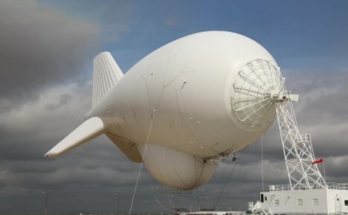by Zachary Hofer, Electronics Analyst, Forecast International.
The inexorable march to the future continues. One of the U.S. Navy’s most prominent radar programs will be upgraded before the system even goes into production. It will receive an important reconfiguration with gallium nitride (GaN) components as the radar enters low-rate initial production (LRIP) and well before it enters full-rate production (FRP).
The TPS-80 Ground/Air Task Oriented Radar (G/ATOR) is set to become one of the key radars in the U.S. Navy’s operational assembly of land-based radars. When it comes into full use – FRP deliveries are projected to begin in 2021 – the G/ATOR will fulfill a diverse set of roles, including aircraft detection, tracking, and engagement; cruise missile detection and engagement; hostile ground-weapon location; and military air traffic control. With so many “hats” falling on one system, a system with a projected multi-decade service life, it is important that the G/ATOR be as technologically proficient as possible at the time it begins fielding. To this end, the U.S. Navy is funding a transition to GaN electronics components.
On August 25, the Navy awarded a $9.2 million modification to a previously awarded contract to incorporate Phase II of the GaN transition into LRIP TPS-80 G/ATORs. By incorporating GaN circuitry, the Navy will be equipping its new radars with the latest, most powerful, highest tier trend in electronics technology.
Over the past several decades, mass-producible, cutting-edge electronics architectures have moved from a silicon (Si) base to gallium arsenide (GaAs) and eventually GaN. Now, in 2015, gallium nitride technology looks as if it will be the winner as we move from the 2010s into the 2020s. Several noteworthy land-based radar programs have recently or will soon be transitioning to the technology, including Saab’s Giraffe family of radars. GaN affords increased efficiency and speed along with a smaller form factor and lower signal deterioration as power increases, all features that operators find beneficial.
The G/ATOR GaN transition Phase II contract is expected to be completed by the end of 2016. It follows on the heels of the system’s first LRIP contract, awarded in October 2014.
For 50 years, Forecast International intelligence reports have been the aerospace and defense industry standard for accurate research, analysis, and projections. Our experienced analysts compile, evaluate, and present accurate data for decision makers. FI's market research reports offer concise analysis of individual programs and identify market opportunities. Each report includes a program overview, detailed statistics, recent developments and a competitive analysis, culminating in production forecasts spanning 10 or 15 years. Let our market intelligence reports be a key part of reducing uncertainties and mastering your specific market and its growth potential. Find out more at www.forecastinternational.com




